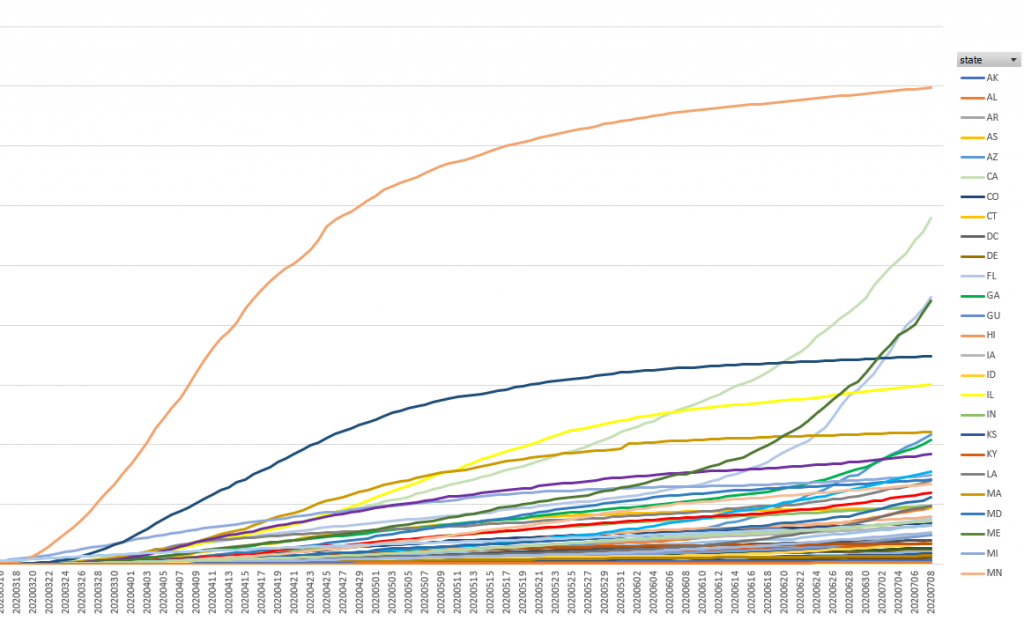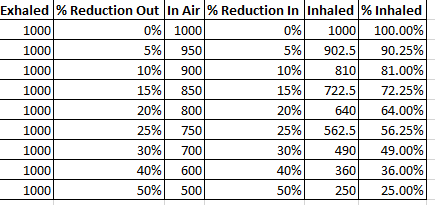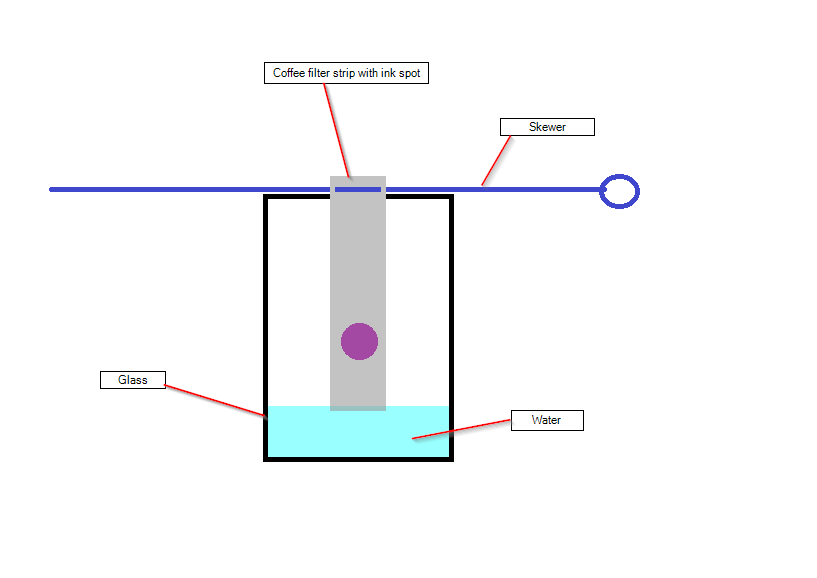Category: Miscellaneous
School Considerations
Marketing Fail
School’s Out For …
I want to know what schools are going to do in September/November after what they did in August proves to be foolishly optimistic (either ‘the virus will disappear’ or ‘one person will be able to ensure twenty six-year-old kids wear masks and stay 6 feet apart, plus we can have a janitor in each restroom sanitizing after each use’) and they’ve failed to use the intervening 4-5 months to develop a decent online teaching approach.
Ohio Public Health Warning Level
Ohio now has a per-county public health alert level rating that reminds me of the terror alert color-coded system we had after 9/11.
Of course there will be people in red or purple counties heading out to neighboring counties to shop/eat/socialize/party because those neighboring counties are only in orange so they don’t need to wear a mask there. I don’t get why I’ve got to get my car e-checked because my county borders Cuyahoga but we wouldn’t have to wear a mask for the same reason … but it’s a step in the right direction deeming masks mandatory *somewhere* based on *something*.
Personal Finance Lesson – Credit Reports
Around 2000, I had a Key Bank account and paid for the “bill payment add-on” — it was like three bucks a month, but beat the late payment charges I’d incur for forgetting to pay bills, so worth it to me. Got transferred to another state where they didn’t have any branches, so I went into the bank and closed my account. They gave me a cheque, closed out the account, and I left to open an account at a nearby bank that did have branches in the state to which I was moving.
Years later, I got denied trying to open a checking account — like I tried to hand a couple grand over to a bank and they said “no thanks”. I’d gone across the street and opened an account with a different bank. Didn’t really think anything about it until I got a letter in the mail saying I was entitled to a copy of my credit report because information in that report had been used to deny me something. I’d never even heard of a credit report! When that credit report arrived, I learned that Key Bank had closed my account but failed to cancel my bill payment subscription (WTF?!?). They proceeded to charge me three bucks a month for years. And charged me a monthly over-draft penalty for having a negative balance. Forty bucks a month for a few years sure adds up! The eventually closed my account and got a judgement against me (in a state I hadn’t lived in for years, and I never gave them my new address because I wasn’t a customer for a few months before I moved). Absolutely refused to pay that — it aged off of my credit report because they didn’t bother to renew the judgement.
So what’s a credit report? There are three different companies (Experian, Equifax, and TransUnion) that keep track of how well you pay your bills. Not bills like the electric bill (unless you don’t pay it and the electric company gets a judgement against you) — loans. Why three? Because capitalism, I guess. If you bought some server and database space and managed to convince thousands of lenders that it was in their interest to let you know about all of their customers, I guess you could be a credit bureau too. A bit like a certificate authority — once you can convince enough people to trust you, you’ve got a viable product.
When you take out a loan, they associate it to your record. They keep track of how much should be paid as well as if you’ve paid it. The idea, for someone who is thinking about extending you credit, is that your past history of repaying (or not) debts is a bit of an indicator of your future repayment history. More importantly, though, it allows potential creditors to judge your income against your known fixed expenses. If you make $1000 a month and don’t have to spend any of it, you’ve got a good bit of disposable income. If you make $1000 a month, but pay $800 in rent … you’re either eating or repaying the loan so not a good credit risk.
I’m sure companies looking to lend money to people pay something to access these credit reports, but these credit bureaus have another line of income — basically using your private information for marketing purposes. Some mortgage lender wants to offer people a loan — they could just send a mailer to everyone in a zip code, but some of those people have already paid off their mortgage. Others are renting the house. A more targeted advertisement would be sent to people with outstanding mortgages — even better, scope to people with either large outstanding mortgages (how much you’re save with a refi!) or small outstanding balances (think of all you could do with a second mortgage!).
Twenty or more years ago, the only way you had free access to the content of your file was after you’d been denied credit. Like happened to me. Since then, federal laws have changed. You can access, online, a copy of your credit report from each credit bureau once a year — this means you can get the Equifax one in January, the Experian one in May, and the TransUnion one in September. Then get he Equifax one again in January. Since the reporting is generally automated, there shouldn’t be much difference between data held in the three companies. Every four months, you’re getting a picture of what these bureaus record about you.
Why would you do this? Like anything, info in the credit report can be wrong. Sometimes they’ll have someone with a similar name linked up to you. Sometimes they’ll just have bad info — an account closure that got omitted or a ‘current employer’ that you haven’t worked for in years. There’s a “dispute” process that you can use to request they fix anything you consider wrong (although they may not consider it work fixing — employer related stuff — or may not agree is wrong). Sometimes you’ll discover someone’s opened an account in your name, racked up a lot of charges, and left you with the bill (i.e. identity theft).
As of Sept 2018, you can freeze your credit report so no one can access it. For free. This helps avoid unauthorized parties opening credit accounts under your name and should prevent your info from being used to make you the target of lender advertising. Freezing your credit file restricts who can access the information — which means you have to unfreeze your file whenever you want to apply for credit. It’s an extra step, but how often are you actually applying for a loan? And the credit bureaus need to unfreeze your file within an hour of your online request … so it’s not a big inconvenience. To freeze your file, you must submit individual requests to Experian, Equifax, and TransUnion. You can ‘thaw’ your file temporarily when you know you’re submitting a credit application — I usually unlock my file for a few weeks to ensure delays in data processing don’t mean my application gets processed against a frozen file.
You can also freeze the file of your kid who is under 16 — a great thing for most kids who absolutely are not applying for credit! But the credit bureaus don’t make it that easy to freeze a kids file — Experian and Equifax have a request form, TransUnion wants a letter requesting a “protected consumer freeze” on the specified individual. In each case, you’ve got to include copies of identifying info — your ID, your kid’s birth certificate, and your kids social security card kind of stuff.
Knowing the Law
We had some chap in the back yard on Saturday afternoon. Memorial Day weekend Saturday. He’s a surveyor, and the pins on the property he’s trying to survey aren’t there. So he’s getting other pins for reference. But he didn’t want to provide his name or the name of his company. Which … yeah, dodgy. Scott ended up calling the police out, and they claim that surveyors can just wander on your property whenever they want. But the chap said he didn’t actually need to be on our property and took off.
Turns out he actually does work for a survey/engineering company. The prospective buyer who engaged the survey company stopped by to chat a bit. It’s amazing what a little customer service knowledge would get you — providing your name, license number (you know, something we could look up), and a business card with your company’s info is a lot less suspect than “no, I don’t need to give you my name or the company’s name. I can just wander around your property any time I want”. Honey v/s vinegar. At that, why in the world would the company’s policy not be driving up to the neighboring property, ringing the bell, and asking first?! That’s just polite.
Funniest part of the whole thing, though? We looked up the actual laws for Ohio. ORC 163.03 — yes, a surveyor can wander onto your property. 48 hours after they notify you of their intention. They are not, however, allowed to randomly decide to wander around your property on Saturday afternoon with no notice. And, if you want to be a real jerk about it, you could still deny them access and adjudicate whether the pins in question are ‘necessary or proper for the purpose of the agency’.
Just because a law enforcement officer tells you something is the law doesn’t mean it’s the law.
Chili Seasoning Blend
Chili Seasoning Blend
Cuisine: MexicanDifficulty: EasyIngredients
1/4 cup chili spice
1 tsp roasted garlic powder
1 tsp onion powder
1/2 tsp crushed red pepper flakes
1/4 tsp cayenne pepper
2 tsp smoked paprika
1 tsp oregano
1 Tbsp salt
1 Tbsp ground black pepper
Method
- Combine all ingredients in a food processor and blend until powered.
Notes
- I use this blend in my chili recipe and as the spice for taco/burrito fillings.
Pants?
A friend pointed out that pants offer a little protection for me, but they are a lot of protection for you … So we can all stop wearing pants now, right? And protesting stores that require customers to wear pants! Freedom! Liberty!
Ink Chromatography Experiment
Materials:
- Glass vessels – glass cup, graduated cylinder, etc
- Coffee filter
- Scissors
- Shish kabob skewers
- Water
- Colored markers – ideally include a few black markers from different companies
Process
- Cut the coffee filter into strips
- About 1” from the bottom of the strip, put a dot using one of the markers
- Skewer the strip at the top and hang over a glass of water
- Hang the strip over the glass
- Carefully fill the glass with water until it just touches the bottom of the coffee filter strip.
- It will take a few minutes for the water to move up the strip. Once the water has finished moving up the strip, take the skewer and strip off the glass. Empty the glass of water, then place the strip and skewer back on the glass to dry.
- Notice how different inks are made of different color combinations. Notice different inks carry different distances up the filter strip.



